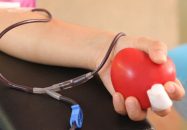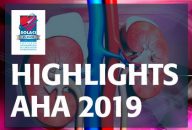The European Association for Cardio-Thoracic Surgery (EACTS) formally withdrew its support for the latest coronary revascularization guidelines following a BBC investigation suggesting that data from the EXCEL trial might have been manipulated. The recommendations for left main coronary artery revascularization featured in the 2018 guidelines, which were written jointly with the European Society of Cardiology…
The EXCEL Authors’ Answer to the BBC Investigation
Do to an investigation carried out by the BBC that led to the withdrawal of EACTS support from the latest coronary revascularization guidelines, the authors of the EXCEL study (indicated by this research) provided the following answers. -Defining Peri-Procedural Infarction: All researchers involved (including surgeons) agreed that the universal definition of infarction was not right…
Mechanisms of Infarction in Coronary Arteries with Non-Significant Lesions
Infarctions with non-obstructive coronary artery disease, also known as MINOCA (myocardial infarction with nonobstructive coronary arteries), often present plaque rupture and thrombi associated with the affected myocardial territory. In these patients, optical coherence tomography (OCT) is of great value to identify the “culprit”. Even though atherosclerosis has been identified as a potential MINOCA mechanism, the…
Secondary Prevention: A Responsibility We Should Not Delegate
After coronary angioplasty, the use of drugs whose efficacy for the reduction of major events has been proven declines over time, which is associated with worse patient prognosis. Sometimes, without meaning to, we convey to patients the idea that, once the stent has been implanted, the artery is “cured” or that the only potential future…
Off-hours Primary PCI Still Have the Highest Mortality Rate?
According to this contemporary study, in the current organized STEMI network, patients admitted to a tertiary high-volume center for primary PCI are managed similarly and have similar prognosis regardless admission time. Several prior studies have shown primary PCI during off-hours (6 pm to 8 am) had worse outcomes vs. on-hour interventions (8 am to 6…
International Consensus to Prevent Radial Artery Occlusion After Interventions
This study provides the steps to follow in order to prevent or at least reduce radial artery occlusion after using it as an access for a diagnosis or treatment study. The use of transradial access is exponentially increasing worldwide due to its lower chance of bleeding events and vascular complications than transfemoral access. Radial artery…
AHA 2019 | COMPLETE: Complete Revascularization Is Superior since It Treats Other Vulnerable Plaque
This COMPLETE sub-study using optical coherence tomography (OCT) showed the prevalence of vulnerable lesions other than the culprit which should provide a physiopathological explanation of the benefit of complete revascularization observed in the original study. STEMI patients with multivessel disease will benefit from complete revascularization in terms of reduced cardiovascular death and repeat MI according…
AHA 2019 | ISCHEMIA-CKD: Chronic Kidney Disease and Stable Coronary Disease
Among patients in the main ISCHEMIA trial, those with chronic kidney disease are a particularly high-risk subgroup. However, an invasive strategy with coronary angiography and revascularization did not improve the rate of events, similarly to what happened in the general population for the aforementioned trial. The rate of death or acute myocardial infarction was 36.4%…
Microvascular Angina Could Have Risk Gradients
This study recently published in JACC paves the way to identifying higher risk patients among those with no epicardial coronary artery disease (CAD) that present angina symptoms. Evidence of coronary spasm and increased microcirculation resistance in patients with angina (but with no epicardial obstructive CAD) is associated with increased risk of adverse cardiac events. AT…
AHA 2019 | TWILIGHT: Discontinue Aspirin after Acute Coronary Syndrome
This study findings confirm less bleeding at no extra cost of thrombotic events when aspirin is discontinued after an acute coronary syndrome (ACS). In the same line as the original TWILIGHT, this study focused on ACS patients alone (excluding STEMI) and confirmed that aspirin discontinuation after 3-month DAPT to continue with ticagrelor alone, reduced the…
AHA 2019 | ISCHEMIA: The Invasive Approach (PCI or Surgery) Results Similar to Optimal Medical Treatment
After a several year follow up, the International Study of Comparative Health Effectiveness with Medical and Invasive Approaches (ISCHEMIA) has shown that an invasive approach in addition to optimal medical treatment (OMT) does not offer benefits when it comes to preventing major cardiovascular events compared against optimal medical treatment alone in stable patients with moderate…










